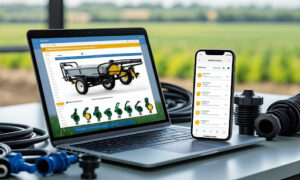In our fast-paced world, health technology has become an integral part of our lives, revolutionising healthcare in numerous ways. These innovations have undeniably improved patient care, from smart devices monitoring vital signs to advanced medical equipment aiding in diagnosis and treatments. However, like any field, health technology can occasionally give rise to emergencies. Maintaining composure, taking stock of the situation, and acting swiftly to protect the lives of people in peril are critical. Let’s explore essential steps you can take to handle health technology emergencies with confidence and competence effectively.
Maintaining Composure And Evaluating The Scenario
Keeping one’s cool amid a crisis is of utmost importance. When panic sets in, the issue worsens, making it harder to think clearly. In this case, it’s best to take a moment to calm down, take stock, and put your own and others’ safety first. Investigate the incident and determine whether the health technology was to blame. Understanding the big picture can help you make sound decisions and respond rationally.
Summoning Trained Experts For Assistance
Your acquaintance with medical devices is beneficial, but remember that only medical professionals should provide care in an emergency. Therefore, calling for medical assistance immediately should be one of your first actions. Give them background on the specific medical technologies at play so they can better understand the patient’s condition and provide aid. It is critical to remember that in times of emergency, even if you are skilled in the field, you must rely on the skills of experienced medical professionals.
Providing Basic First Aid Techniques
While awaiting the arrival of medical professionals, you can offer vital first aid assistance. Proficiency in basic first aid techniques can significantly impact the outcome of an emergency. Among the most critical skills to acquire is Cardiopulmonary Resuscitation (CPR). Correctly administering CPR can be lifesaving, particularly in cases of cardiac arrest. Consider enrolling in a CPR certification course to ensure you are well-prepared to act in such critical situations.
Attending To Injuries And Wounds
Even when using modern medical equipment, accidents do happen. Quick medical care for these kinds of wounds is crucial. First, use mild soap and water to thoroughly clean the wound and remove debris. Put a sterile bandage over it to prevent infection and speed up healing. To control and reduce blood loss, apply direct pressure to severe wounds with profuse bleeding with a clean cloth or your hands. The pain will go away quickly, and you might be able to avoid any more difficulties by following these easy steps.
Device-Specific First Aid Awareness
First aid protocols may need to vary depending on the type of medical technology used. Learn these methods that are unique to your device. Suppose there are troubleshooting instructions for a broken medical device, for instance. In that case, they should be strictly followed. Remove the device’s power supply from the wall and alert medical staff. Always turn off the power before approaching a patient who may have received an electric shock from medical equipment. If CPR is needed, perform it and wait for help to arrive.
Documenting The Incident
Documenting the situation after the emergency has been resolved is essential. Make a note of the time, date, and participants, and briefly describe what happened. This data is invaluable for planning, consultations with medical professionals, and possible follow-up enquiries. Your thorough documentation of the incident will aid in establishing a complete picture of what occurred, leading to better treatment and prevention of such situations in the future.
Conclusion
Having first aid skills is essential, especially during health technology emergencies. Maintaining your composure, making contact with medical experts, and performing even the most fundamental lifesaving manoeuvres are all important parts of the rescue effort. It’s important to learn the specific first aid procedures for different devices and prioritise safety. If you possess first aid skills and have received first aid training from an accredited provider, you can significantly impact life-or-death situations involving health technology. Remember, your actions can potentially save lives. Stay composed, confident, and collected during emergencies, and be a source of support when it’s needed the most.



































